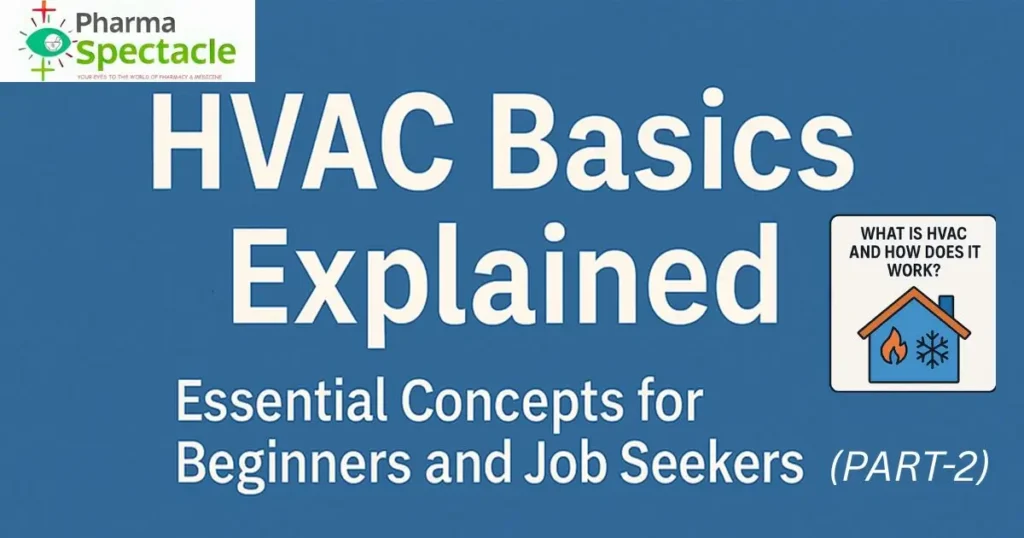
Heating, ventilation, and air conditioning (HVAC) systems are essential for regulating indoor environments in homes, offices, and industrial spaces. But HVAC isn’t just one system — it’s a broad term that includes several types of setups, each suited for different applications.
If you’re preparing for an HVAC interview, understanding the core types of HVAC systems is crucial. This guide breaks down the major types you should know.
Also Read: HVAC Basics Explained – Essential Concepts for Beginners and Job Seekers
1. Constant Air Volume (CAV) System
CAV systems provide a steady airflow at adjustable temperatures. The system modifies the supply air temperature to satisfy heating or cooling needs, but the airflow stays constant. These are perfect for spaces with stable thermal loads, such as small offices or classrooms.
Key Features:
- Simple and reliable
- Cost-effective for single-zone applications
- Limited energy efficiency in multi-zone buildings
2. Variable Air Volume (VAV) System
Unlike CAV, VAV systems deliver a variable airflow at a constant temperature. The system adjusts the volume of air supplied to match the room’s temperature requirement. These are more energy-efficient and suitable for large, multi-zone buildings like malls, airports, or hospitals.
Benefits:
- Better temperature control
- Improved energy efficiency
- Reduces fan energy usage during part-load conditions
3. Split Air Conditioning System
The split system is perhaps the most common in residential and small commercial spaces. It has two main components:
- Outdoor unit (compressor and condenser)
- Indoor unit (evaporator coil and blower)
Split systems are easy to install, cost-effective, and offer efficient cooling or heating for individual rooms.
Best for: Homes, shops, server rooms, or small offices
4. Centralized HVAC System
Centralized systems serve large buildings through a network of ducts. The core equipment, including chillers, air handling units (AHUs), boilers, and compressors, is located in a central plant room. Conditioned air is distributed via ductwork.
Advantages:
- Uniform cooling/heating
- Better control and automation
- Ideal for large complexes and skyscrapers
5. Packaged HVAC System
Packaged units house all components — compressor, condenser, expansion valve, and evaporator — in a single cabinet. These are mounted on rooftops or outdoor spaces and are pre-engineered for medium-scale needs.
Use Cases:
- Hotels, restaurants, and large halls
- Buildings without space for split components
6. Hydronic or Air-Water System
Hydronic systems use water as the heat transfer medium. Hot or chilled water is circulated through pipes to terminal devices like radiators, fan coil units (FCUs), or underfloor tubing.
Why choose hydronic?
- Energy-efficient and quieter
- Great for radiant floor heating
- Suited for both residential and commercial buildings
7. Dual Duct System
This system supplies air through two separate ducts:
- One carries cold air
- One carries warm air
Mixing dampers blend the two streams to achieve the desired temperature for each zone, allowing for precise zone-wise control but at the expense of less energy efficiency.
8. Local Comfort Cooling Units
Also known as spot cooling units, these are used for cooling specific zones or equipment directly. They include portable AC units, cassette systems, and small ductless units. They don’t require complex ducting or integration with central systems.
Typical Use: Server rooms, small offices, or renovation areas
Summary Table
| HVAC System | Airflow | Temp Control | Ideal Use |
| CAV | Constant | Variable | Single-zone buildings |
| VAV | Variable | Constant | Multi-zone buildings |
| Split AC | Fixed | Fixed | Homes, small offices |
| Centralized | Variable | Automated | Large commercial spaces |
| Packaged Unit | Fixed | Fixed | Rooftop installations |
| Hydronic System | Fluid | High precision | Radiant heating/cooling |
| Dual Duct | Dual | High control | Complex zone applications |
| Local Comfort Units | Localized | Fixed | Spot or temporary cooling |
Final Thoughts
Each HVAC system has its benefits, limitations, and ideal applications. Whether you’re installing a system or preparing for an interview, understanding these types will boost your confidence and clarity.
In upcoming posts, we’ll dive deeper into CAV vs VAV, split vs centralized systems, and hydronic system design. Bookmark this blog or follow us for updates!
Found this post helpful?
Share it with your friends & colleagues.
Follow us on WhatsApp & Telegram for job updates, interview tips, and study material:
Subscribe to PharmaSpectacle to stay ahead in the pharmaceutical world with valuable pharma knowledge and professional growth tips.